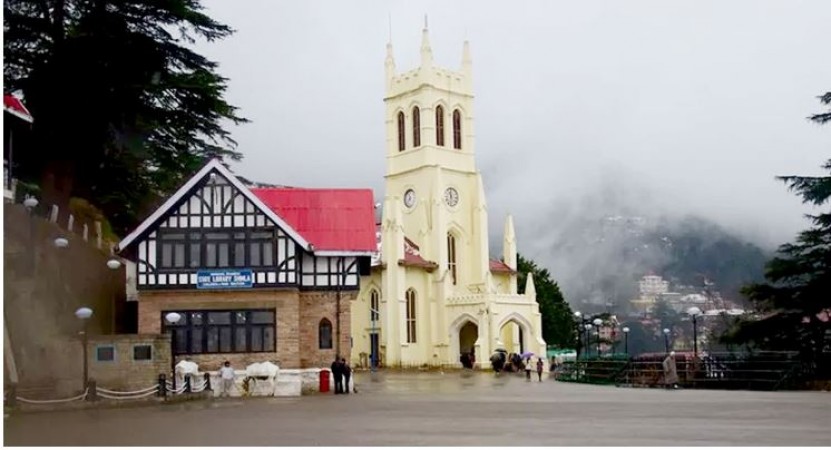
Christ Church Shimla is the second largest Church of North India. It was built by the British in 1857 to serve the large Anglican British community in the area. The majestic appearance of the church and its stunning location makes it a prime attraction in Shimla.
The inception of Christ Church dates back to the mid-19th century when the British East India Company established at Shimla as their summer capital. The rapid development of Shimla as a hill station necessitated the construction of various facilities to cater to the British community living there. One such need was a place of worship, and thus, the idea of building Christ Church was conceived.
Also Read: Se Cathedral: Asia’s Largest Church
Construction of the church began in 1846 under the guidance of Colonel J.T. Boileau, a renowned architect of that time. The church's foundation stone was laid by Baroness Amherst, wife of the then-governor general, Lord William Bentinck, on 9th September 1844. The architectural design of the church was heavily influenced by neo-Gothic style, which was prevalent during the Victorian era.
Christ Church stands proudly on the Ridge, a prominent open space in Shimla. Its awe-inspiring beauty owes much to its neo-Gothic architecture, which is characterized by pointed arches, ribbed vaults, and ornate decorations. The church's most striking feature is its sturdy, grey-stone structure, which gracefully complements the lush green surroundings and the snow-capped Himalayan peaks in the distance.
Also Read: Our Lady of the Immaculate Conception Church: Historic Church
The church's facade boasts a commanding presence, with tall lancet windows, intricate tracery, and delicately carved stone columns. The spire rises to a height of 90 feet, and its six clock faces make it a recognizable landmark in Shimla. The interior of the church is equally impressive, featuring beautiful stained-glass windows that depict scenes from Christian scriptures, adding an ethereal charm to the sacred space. The wooden pews, brass plaques, and a stunning pipe organ enhance the church's appeal.
From the moment of its completion, Christ Church became a significant religious institution in Shimla. It served as a place of worship for the British community, offering them solace and a sense of familiarity amid the distant and unfamiliar surroundings. The church also played a crucial role in fostering a sense of community among the British residents and in providing spiritual guidance and support.
Also Read: The Holy Land: Sacred Places in Jerusalem for Judaism, Christianity, and Islam
Over the years, as Shimla grew into a vibrant hill station, the local Indian population also began attending the church services. Today, Christ Church stands as an inclusive place of worship, welcoming people of all backgrounds and faiths. It has become an embodiment of harmony and unity, exemplifying the diversity that characterizes modern India.
Christ Church in Shimla stands as a remarkable blend of history, architecture, and cultural significance. Its origins as a colonial legacy have evolved over the years, turning it into a symbol of unity and inclusiveness. The church's neo-Gothic design, stunning stained-glass windows, and panoramic location make it an architectural marvel that continues to captivate visitors and serve as an enduring reminder of Shimla's colonial past. As time goes on, the church's legacy will persist, and it will continue to hold a special place in the hearts of both locals and tourists alike, showcasing the profound impact of history and architecture on shaping a town's identity.
Also Read: Know the top 5 places to visit here, charming Alleppey
Dalhousie attractions, top 10 places to visit and their history